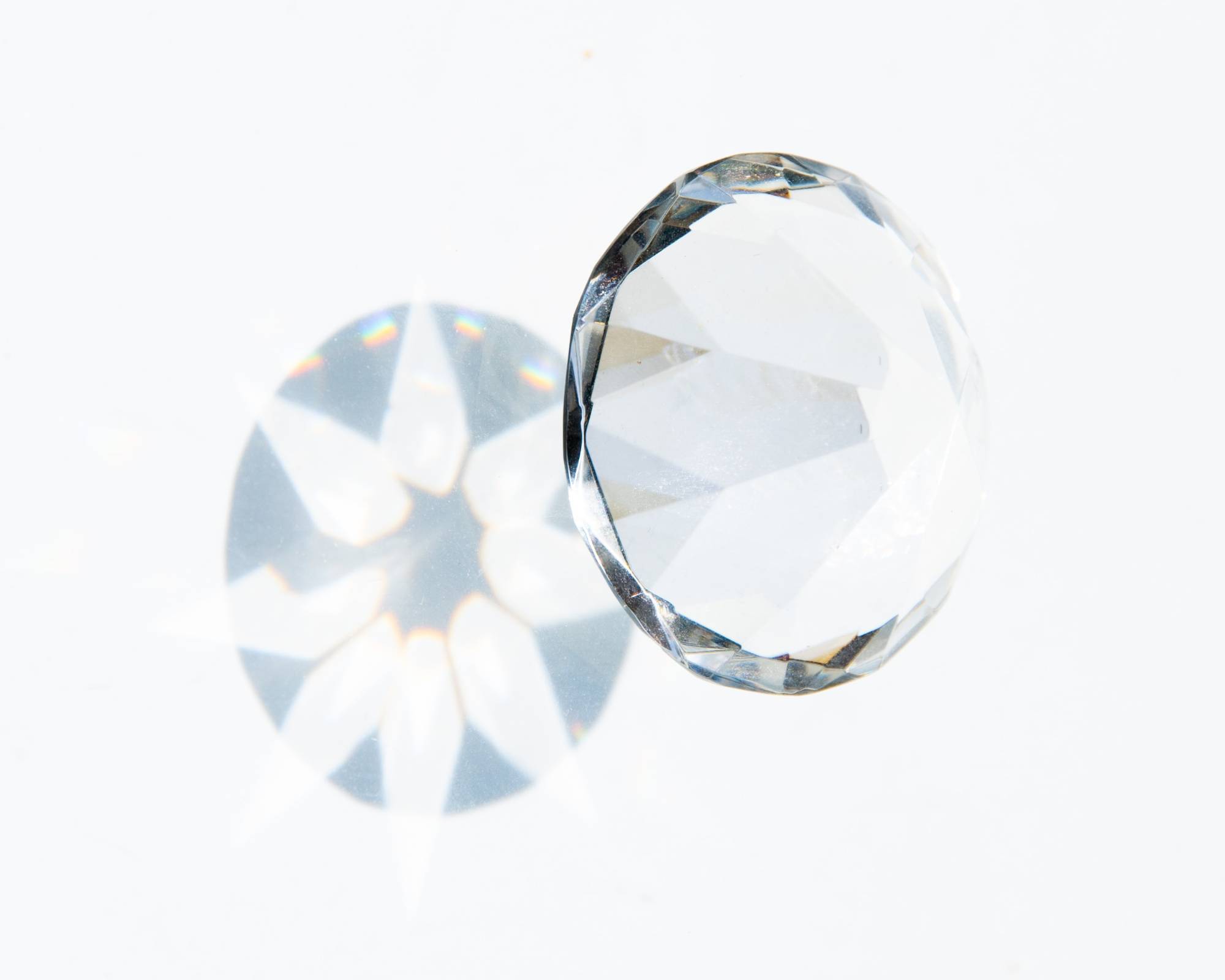Diamonds have long captivated the human imagination with their timeless beauty and undeniable allure, but in the quest for a more sustainable and socially responsible future, a new contender has emerged—lab-grown diamonds. But are they better for people and the planet?
A sparkling dilemma
Diamonds—those dazzling gems that have been coveted for centuries and have long been associated with glamour, luxury, and everlasting love. But in a society increasingly conscious of consumer choices’ environmental and ethical impacts, the diamond industry finds itself at the centre of a heated debate.
The rise of lab-grown diamonds (nearly 70% of millennials consider buying a lab-grown diamond), often touted as a more sustainable and ethical alternative to their natural counterparts, has sparked discussions about the future of diamond sourcing and production.
It’s a carat conundrum that divides the jewellery industry—what’s better for people and the planet? Are lab-grown diamonds the “crystal-clear” solution?
In the words of Marilyn Monroe: “Diamonds are a girl’s best friend.” But, in today’s world, a true friend should also have a sparkling conscience. Let’s dive in.
Understanding diamonds
Before diving into the lab-grown v natural diamond debate, let’s get to know these shimmering stones better.
How diamonds are formed
Natural diamonds owe their existence to a remarkable interplay of geological conditions. Deep beneath the Earth’s surface, carbon atoms arrange themselves into the crystalline structure that gives diamonds their extraordinary strength and brilliance.
The journey begins with carbon-rich materials getting cosy deep in the Earth’s mantle. Over billions of years, they’re subjected to immense heat and pressure—over 2,200 degrees Fahrenheit (1,200 degrees Celsius) kind of heat.
This gives birth to diamond crystals through “crystallisation”. Over time, geological forces push these diamonds closer to the surface, where they can be unearthed through volcanic eruptions or mining operations.
A brief history of diamond mining
Diamonds have a rich history that dates back centuries, tracing its roots to the early discoveries of these magnificent gemstones. Diamonds were initially mined and used for jewellery and adornment in regions like India. As civilisations flourished, the value and beauty of diamonds became widely recognised, giving rise to historical trade routes that transported these treasures to various parts of the world.
However, it was during the era of European colonialism (more on that below) that the diamond trade witnessed a significant shift. The exploration and exploitation of diamond resources became intertwined with the quest for power and wealth (leading to De Beers’ diamond monopoly, which lasted decades). In Africa especially, diamond mining became a catalyst for colonial endeavours, leading to forced labour, land dispossession, and economic extraction.
As time progressed, diamonds began to symbolise status, luxury, and romance. The decline in diamond prices prompted a successful marketing campaign by De Beers, “A diamond is forever,” associating engagement rings with diamonds. In just four years, diamond sales grew by 55% in the US.
Diamonds, colonialism, and exploitation
The historical connection between diamonds and colonialism cannot be ignored. During the colonial era, Western powers established control over diamond-rich regions in Africa, exploiting resources for their economic gain. This period witnessed the ruthless exploitation of both land and labour, perpetuating cycles of inequality and socio-economic instability.
The diamond trade became entangled with oppressive systems, often resulting in the displacement of communities and the dispossession of their lands. The profits from diamond mining flowed primarily into the pockets of colonial powers, widening the economic disparities between regions, and perpetuating a cycle of dependence and exploitation (that is still going on today).
For example, you might have heard of the legendary 105.6-carat Kohinoor diamond that Queen Camilla chose not to include in her coronation crown. For many, the Kohinoor is a symbol of the colonial era, and is considered “an ill-gotten spoil of Britain’s colonial conquests”. “Calls for the British to return the stone to India have grown increasingly loud since the death of Queen Elizabeth II [in 2022],” reports Vox.
Over the years, human rights abuses have also been documented in some diamond mining regions, including exploitative labour practices and hazardous working conditions. This has raised alarm bells regarding the treatment of workers and their fundamental rights within the diamond industry.
A note on blood diamonds
Blood diamonds, also known as conflict diamonds, are tainted by human suffering and armed conflicts and have been a source of great concern within the industry. Blood diamonds are mined in war zones, often under brutal conditions, and controlled by armed groups seeking to fund their activities through illicit diamond trade. The profits from these diamonds have fuelled violence, perpetuated human rights abuses, and inflicted immeasurable pain upon communities caught in the crossfire. Efforts have been made to combat the trade of blood diamonds through certification systems such as the Kimberley Process, aiming to ensure that diamonds are sourced from conflict-free regions.
How lab-grown diamonds are made
As an alternative to natural diamonds, lab-grown diamonds offer an interesting avenue for conscious consumers. These diamonds, also known as synthetic or cultured diamonds, are created (or grown) in controlled laboratory environments using advanced technology and innovative processes.
Lab-grown diamonds are crafted through two primary methods: Chemical Vapor Deposition (CVD) and High Pressure High Temperature (HPHT). Both methods aim to replicate the natural conditions under which diamonds form but with a much shorter timescale.
In the CVD process, a tiny diamond “seed” (a natural diamond or another lab-grown diamond) is placed in a sealed chamber filled with carbon-rich gases such as methane. By applying energy, the gases break down, and carbon atoms precipitate onto the diamond seed, layer by layer, forming a larger diamond crystal over time.
The HPHT method involves subjecting a diamond seed to immense pressure and high temperature at several thousand degrees Celsius. This mimics the conditions found deep within the Earth’s mantle.
Lab-grown and natural diamonds share the same chemical composition at the molecular level: pure carbon arranged in a crystalline lattice structure.
Lab-grown diamonds possess similar hardness, brilliance, and durability as natural diamonds. They display the characteristic refractive index, dispersion, and lustre that make diamonds captivating, making it nearly impossible for the naked, untrained eye to differentiate between a lab-grown diamond and a natural diamond based solely on their appearance.
How do lab-grown and natural diamonds impact people and the planet?
Diamonds, whether natural or lab-grown, have significant implications for both the environment and the wellbeing of the people involved in their production and supply chains.
Planet
The mining of natural diamonds has environmental consequences that cannot be overlooked. Diamond mining often involves land clearance, leading to deforestation and habitat destruction. This loss of natural ecosystems can disrupt biodiversity and displace communities and wildlife populations. However, “compared to many other industries such as agriculture, mining uses relatively small pockets of land, and the future of mining could move to using techniques that are arguably even less invasive on the environment by using less land and emitting less pollution,” says Earth.org.
Additionally, the extraction and transportation processes associated with natural diamond mining are energy-intensive. Heavy machinery and equipment are employed to dig deep into the Earth, consuming significant amounts of fossil fuels, and contributing to greenhouse gas emissions. According to McKinsey, mining (not just diamonds) is responsible for 4-7% of greenhouse gas (GHG) emissions globally.
Furthermore, diamond mining operations can result in water pollution and soil degradation. The process can contaminate nearby water sources, affecting aquatic ecosystems and local communities that rely on clean water for their livelihoods. Soil erosion and degradation can occur due to the removal of topsoil during mining activities, impairing the land’s long-term fertility and agricultural potential. According to one source, “one carat of a mined diamond approximately removes 250 tons of earth/soil, requires 120 gallons of water, and emits 140lbs of carbon dioxide”.
While lab-grown diamonds are touted as a more environmentally-friendly alternative to natural diamonds, they are not entirely without their environmental impacts.
The production of lab-grown diamonds also requires energy consumption, primarily for creating the necessary laboratory conditions and applying heat and pressure during the growth process. This energy consumption differs between the methods used to grow the diamonds. Still, they all contribute to carbon emissions, although to a lesser extent than the mining and extracting of natural diamonds.
It’s worth noting that a 2014 study by consultancy Frost & Sullivan compared lab-grown and mined diamonds and found that mining diamonds “produces 4,383 times more waste than manufactured gems, uses 6.8 times as much water, and consumes 2.14 times the energy per carat produced.”
Moreover, the production of lab-grown diamonds relies on raw materials. The “seed” to initiate the growth process can be another lab-grown diamond or a natural diamond, which, as we saw, can have a significant environmental impact.
People
On the labour front, mining natural diamonds poses several concerning issues. As we saw, blood diamonds have been a long-standing concern in the natural diamond industry. The trade of conflict diamonds has been associated with human rights abuses, including forced labour, child labour (“One survey of diamond miners in the Lunda Norte province of Angola found that 46% of miners were between the ages of 5 and 16” according to one source), and violent exploitation of local communities.
And while efforts have been made to establish certification schemes like the Kimberley Process to ensure the responsible sourcing of diamonds, challenges remain in effectively eradicating the trade of conflict diamonds. “But more than 10 years later, while the process did reduce the number of conflict diamonds on the market, it remains riddled with loopholes, unable to stop many diamonds mined in war zones or under other egregious circumstances from being sold in international markets,” reports TIME Magazine.
Additionally, the natural diamond industry has faced criticisms regarding worker exploitation, unsafe working conditions, and fair wage concerns. In some diamond mining regions, miners work in hazardous environments with limited safety measures, risking their health and wellbeing. Fair compensation for their labour is not always guaranteed, leading to economic inequalities and social challenges within mining communities: “An estimated one million diamond diggers in Africa earn less than a dollar a day, an unliveable wage stooping below the extreme poverty line”, reports History in Politics.
The ethical implications of lab-grown diamonds lie in the potential displacement of traditional diamond mining communities. As the demand for lab-grown diamonds grows, it may impact the livelihoods of those dependent on natural diamond mining for their income. Supporting a transition to lab-grown diamonds should involve considering these communities’ wellbeing and socio-economic conditions and exploring opportunities for alternative livelihoods.
Additionally, it is essential to ensure fair and safe working conditions within the lab-grown diamond industry itself. As the industry expands, it is crucial to establish robust labour rights frameworks, including fair wages, safe working environments, and protection against exploitation.
Setting the diamond
Regardless of whether a diamond is natural or lab-grown, it is often set in precious metals such as gold or silver. The extraction and processing of these metals come with their own human labour and environmental impacts. Using recycled metals or those certified as more environmentally and socially sustainable (like Fairmined Ecological Gold) can help mitigate these impacts.
Our verdict
There is no definitive answer to which option is more environmentally or socially responsible.
The diamond industry, as a whole, still lacks conclusive evidence to support either side’s claims. More research and transparency are still needed. This includes ongoing efforts to improve traceability, ensure fair labour practices, and minimise environmental impacts. The diamond industry should strive for continuous improvement and innovation, seeking lower-impact solutions that benefit both the planet and the people involved in the supply chain.
It's a really fierce debate out there with very impassioned sides. Our approach at the moment is that neither have adequately demonstrated that they are more sustainable, and the best option is vintage diamonds.
Kristian Hardiman – Head of ratings at Good On You
However, there are several key considerations that can guide consumers towards more responsible choices.
First and foremost, traceability and transparency are crucial in both cases. Lab-grown diamonds generally have an advantage in this aspect, as they can be more easily traced from their origin in a laboratory. However, brands promoting lab-grown diamonds should provide evidence that their suppliers ensure safe working conditions, fair wages, and responsible labour practices.
Mined diamonds do seem to require more energy and generate more waste and emissions. What’s more, natural diamonds’ ties to colonialism, conflicts, and human rights issues cannot be overlooked.
If you’re looking to invest in a diamond, our recommendation is to consider second hand or vintage diamonds, which do not contribute to new mining activities. Additionally, exploring alternative gemstones that are more responsibly sourced and have lower environmental impacts is an option.
Ultimately, consumers play a crucial role in driving change within the diamond industry. By being informed and making more conscious choices, consumers can encourage more responsible practices, and we can all “shine bright like a diamond” as Rihanna says, with a clear conscience for generations to come.



















